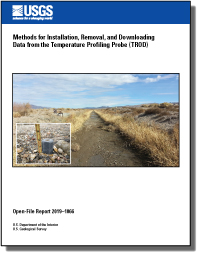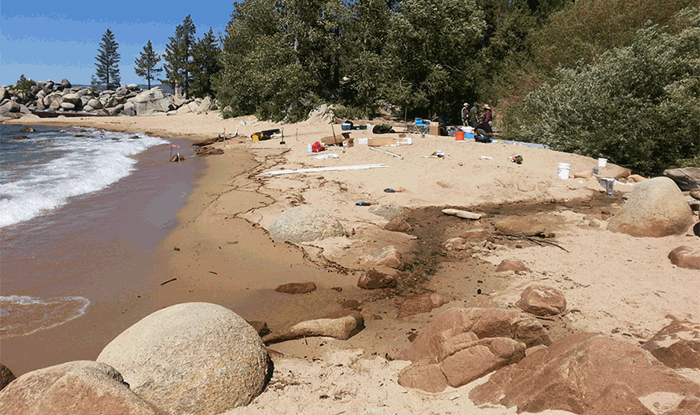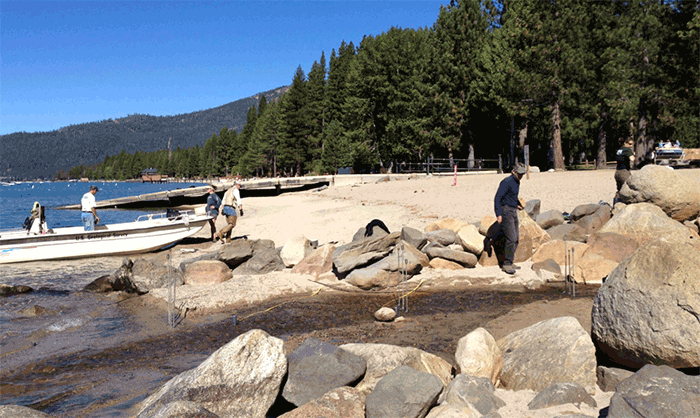
Temperature measurements are routinely made for investigating ecological and hydrological processes. Temperature is a key parameter for monitoring the suitability of fisheries habitat and streambed temperature data are useful for estimating surface water and groundwater exchange. Measuring vertically nested temperatures at the streambed interface poses practical challenges. To address these challenges, we built and patented a new discrete subsurface temperature profiling probe (referred to as TROD, from temperature rod). The TROD was designed for monitoring temperature at 6 discrete temperature depths along a 3/4-inch diameter 1-m long sealed PVC pipe. The temperature sensors are secured inside a water-proof enclosure to avoid moisture damage to electronics. A heavy duty submersible communication cable allows for downloading the temperature data via USB port. The TROD is designed to be installed into stream sediment for measuring temperature in both sediment and/or surface water.
The TROD has several advantages over other methods:
A version of the TROD has been constructed for use without the communication cable for situations where visibility may expose the instrumentation to vandalism (i.e., urban streams) or where burying the cable may be impractical (i.e., dynamic lake shore environments). The sensor spacing interval and depth can be chosen to optimize observation density for a variety of applications We find the temperature probe to be an accurate and robust instrument that allows for easy installation and long-term monitoring in highly variable environments. Because the probe is inexpensive and versatile, it is useful for many applications that require temperature data collection for periods of several months in environments that are difficult to access or require minimal disturbance.
Water Resources Research Journal Article
We have published an article titled "A new temperature profiling probe for investigating groundwater-surface water interaction" with more in-depth information about the TROD.
Read the ArticleRodtrip: From the Desert to the Tundra
Alpha Mach Inc., who the TROD is licensed with, developed a short video of the places you can use a TROD.
USGS Open-File Report 2019-1066

This report provides more information about TROD deployment, removal, and data retrieval.
Read the ReportOriginally designed for estimating long-term seepage losses in unlined canals (Naranjo and Smith, 2016), the TROD has been recently highlighted in recent USGS research of surface water and groundwater exchange at shore zones and stream mouths in the Lake Tahoe Basin (Constantz and others, 2016; Niswonger and others, 2017). Two sites were selected as part of the study: Marlette Creek and Incline Creek. Sediment temperature were used to quantify groundwater flow and nutrient fluxes to the nearshore.
Groundwater entering the barrier beach from right and discharging along the shoreline on the left. Warm lake water mixes with groundwater when waves run-up onto the barrier beach.

Incline creek is flowing from right to left. Waves bring warmer lake water into shore as stream water enters sediments.
